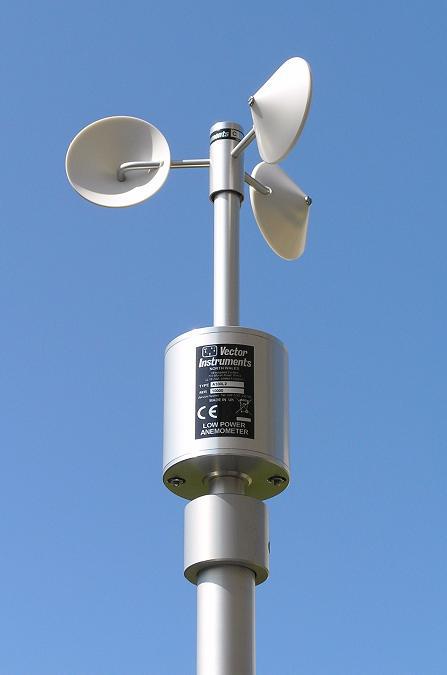Expert Tips for Adjusting Your Anemometer for Optimum Efficiency
Expert Tips for Adjusting Your Anemometer for Optimum Efficiency
Blog Article
Discovering the Features and Advantages of Anemometers for Weather Condition Enthusiasts and Specialists
From cup anemometers to sonic anemometers, each type brings its distinct collection of advantages and applications, losing light on different aspects of climatic conditions. As we delve into the functions and advantages of anemometers, a deeper understanding emerges not just of dominating climate sensations yet likewise of the broader ramifications for fields like wind energy manufacturing and environmental study.
Relevance of Anemometers in Weather Surveillance
Anemometers play a critical duty in weather monitoring by providing precise measurements of wind rate, assisting in projecting and understanding weather patterns. These instruments, ranging from conventional cup anemometers to modern-day ultrasonic anemometers, are necessary for meteorologists, scientists, and weather enthusiasts alike. By measuring wind speed, anemometers assist in identifying the strength of weather condition phenomena such as tornados, typhoons, and tornadoes. Additionally, they give important data for air travel, maritime procedures, and different sectors that are sensitive to wind problems.

Kinds of Anemometers and Their Applications
With the critical role anemometers play in climate surveillance and projecting, comprehending the various kinds of these tools and their applications ends up being vital for professionals and enthusiasts in the area. The most typical types of anemometers consist of mug anemometers, vane anemometers, hot-wire anemometers, and ultrasonic anemometers. Cup anemometers are composed of 3 or four mugs placed on horizontal arms that rotate with the wind, gauging its speed. Vane anemometers, on the other hand, make use of an easily revolving vane to straighten with the wind direction, providing both wind rate and direction dimensions. Hot-wire anemometers operate based upon the concept of convective warm transfer, where the cooling effect of the air circulation is measured to determine wind rate. Ultrasonic anemometers use ultrasonic acoustic wave to determine wind speed and instructions accurately.
Mug anemometers are suitable and robust for general climate monitoring, while vane anemometers are favored for directional dimensions. Ultrasonic anemometers are non-intrusive and supply high accuracy, frequently utilized in study and specialized climate monitoring applications.
Advantages of Utilizing Anemometers in Projecting
In meteorology, the utilization of anemometers offers important advantages for enhancing the accuracy of climate projecting. Anemometers determine wind speed and direction, giving crucial information for anticipating weather condition patterns. By incorporating wind data right into projecting designs, meteorologists can better understand the activity of climate systems, expect changes in climatic problems, and issue much more precise projections.
Additionally, anemometers play an important role in analyzing prospective weather threats. Checking wind speeds helps forecasters forecast severe climate occasions such as hurricanes, hurricanes, and wintertime tornados with greater precision. This early caution system allows authorities to issue prompt informs and execute needed safety actions, decreasing the threats to life and building.
Additionally, anemometers help in optimizing renewable resource production. By assessing wind patterns, meteorologists can identify ideal locations for wind ranches and predict energy result, contributing to the effective generation of wind power.

Anemometers in Wind Energy Production
Provided the critical role anemometers play in offering precise wind information for climate forecasting and threat analysis, their significance reaches the realm of wind energy production. Anemometers are necessary tools in the area of wind power, where the measurement of wind rate and direction is essential for figuring out the usefulness Full Report and performance of wind generator setups. By precisely determining wind speeds at differing heights, anemometers help optimize the positioning and style of wind turbines to optimize power output.
In wind ranches, anemometers are tactically put to collect real-time wind information that is utilized to examine the prospective power manufacturing of a site. This data is critical in establishing the financial stability of wind energy jobs and in projecting power generation to guarantee grid stability. Additionally, anemometers aid in monitoring wind conditions to optimize wind turbine efficiency, prevent damages from high winds, and Go Here make sure the safety of employees functioning in the vicinity of wind generators.
Enhancing Weather Recognizing With Anemometers

Anemometers play a key role in boosting our understanding of microclimates. These local climate condition can differ considerably from broader regional projections, making it crucial to click over here have exact information for certain areas. anemometer. By strategically placing anemometers in various areas, scientists can gather comprehensive information on just how wind acts in different surfaces, urban atmospheres, or bodies of water
Furthermore, anemometers add to enhancing weather condition forecasting versions by supplying real-time data on wind behavior. This details is especially important for forecasting extreme climate events, optimizing farming methods, and sustaining markets like aviation and maritime navigating. Generally, anemometers are vital instruments that allow us to dig deeper right into the complexities of weather condition systems, ultimately bring about more better-informed choices and accurate predictions.
Conclusion
In final thought, anemometers play a vital role in weather condition surveillance and projecting by gauging wind speed and direction. Anemometers likewise have applications in wind power manufacturing, more highlighting their significance in both weather forecasting and renewable energy industries.
From mug anemometers to sonic anemometers, each kind brings its one-of-a-kind collection of applications and advantages, losing light on numerous aspects of atmospheric conditions. These instruments, ranging from conventional cup anemometers to modern-day ultrasonic anemometers, are important for meteorologists, researchers, and weather lovers alike. The most typical types of anemometers include cup anemometers, vane anemometers, hot-wire anemometers, and ultrasonic anemometers. Mug anemometers are ideal and durable for basic weather condition tracking, while vane anemometers are favored for directional measurements. Anemometers are vital tools in the area of wind energy, where the measurement of wind speed and direction is crucial for identifying the feasibility and efficiency of wind turbine setups.
Report this page